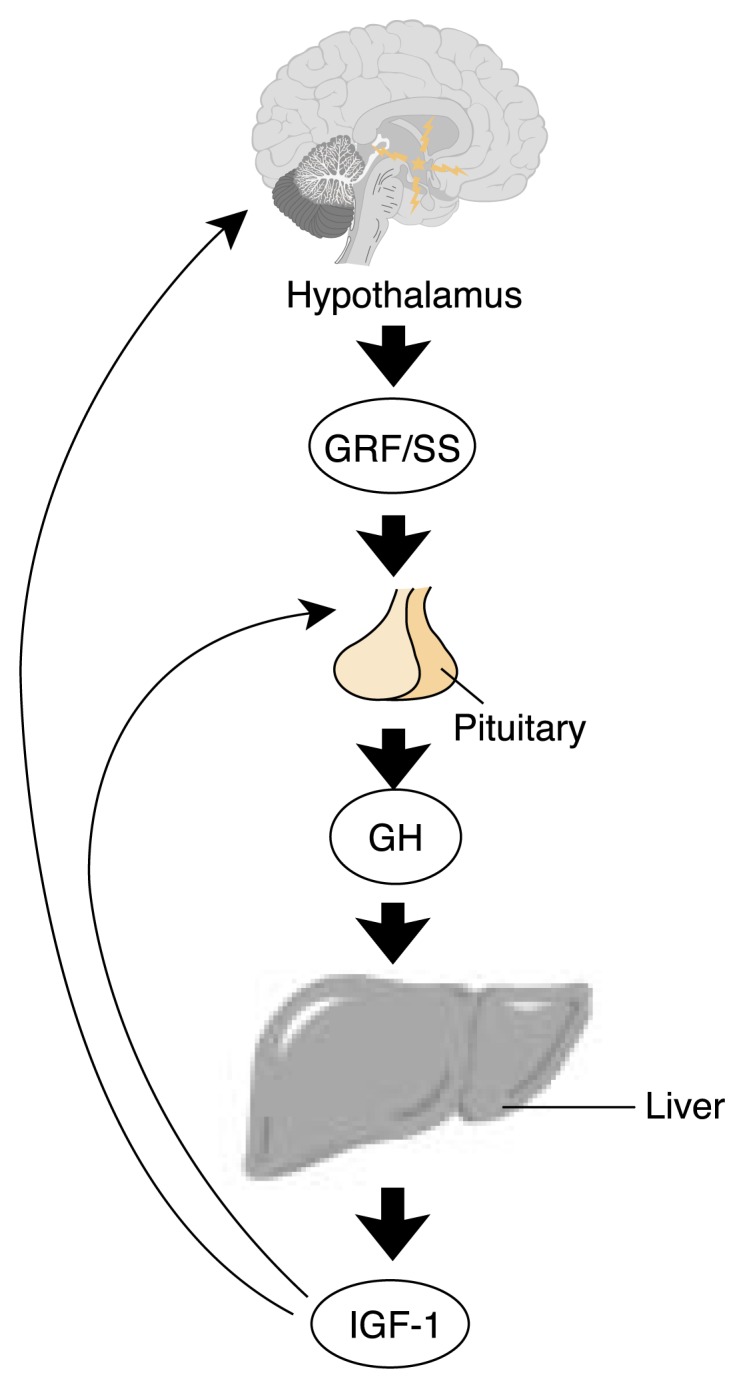Figure 2.

The female growth hormone–insulin-like growth factor (GH–IGF) axis. During puberty, there is a marked increase in growth hormone (GH) secretion from the pituitary as well as an increase in the secretion of the gonadotropins (Mauras et al. 1996). Like the HPG axis, GH secretion is regulated by interaction between the hypothalamus, pituitary, and a variety of organs, mainly the liver (Molitch 1995). The hypothalamus produces and secretes growth hormone–releasing factor (GRF) and the hormone somatostatin (SS) into the blood vessels linking the hypothalamus and pituitary. GRF stimulates GH synthesis and secretion, and SS inhibits GH secretion. GH, secreted into the general circulation, in turn stimulates the synthesis and secretion of the growth-stimulating hormone insulin-like growth factor 1 (IGF–1) in the liver and other organs. IGF–1 mediates many of the growth effects of GH. It also acts as an operative in a negative feedback loop, diminishing GH secretion by actions at the hypothalamus and pituitary. At the hypothalamus, IGF–1 stimulates SS and inhibits GRF release, and at the pituitary, IGF inhibits GH response to GRF. However, despite this negative feedback relationship, the only physiologic situation where both GH and IGF–1 are elevated is normal puberty.
